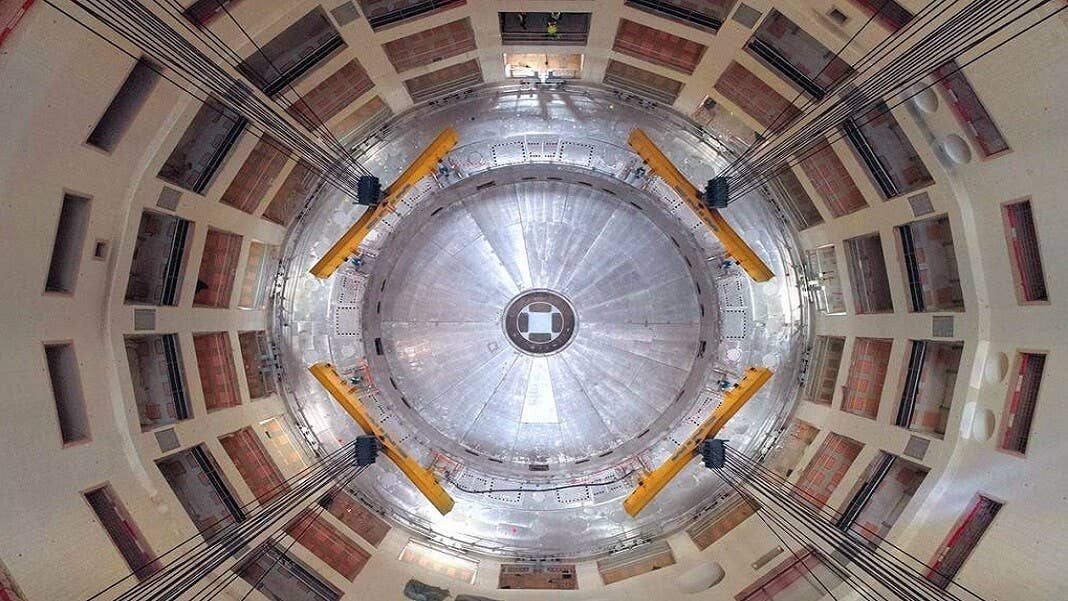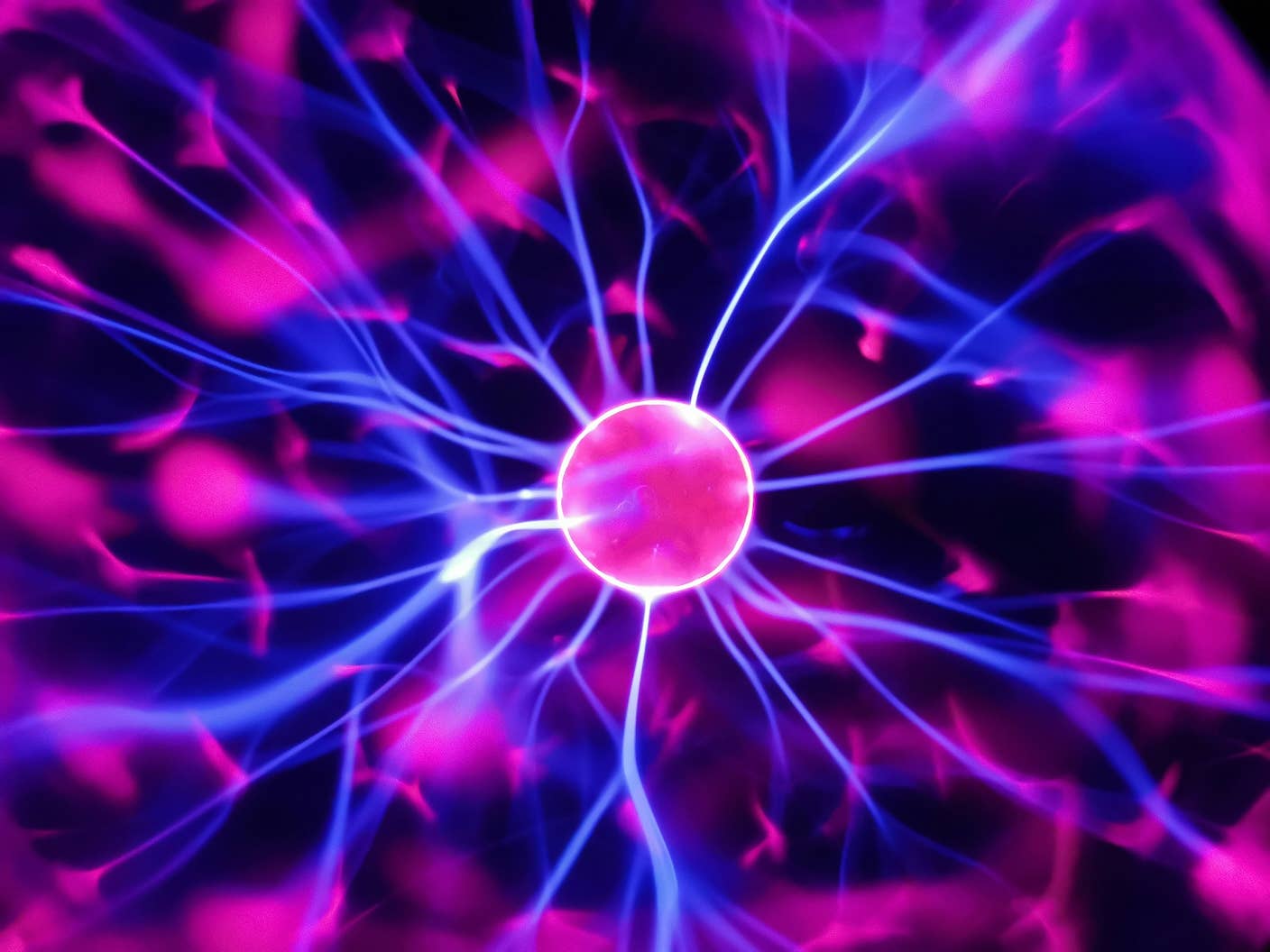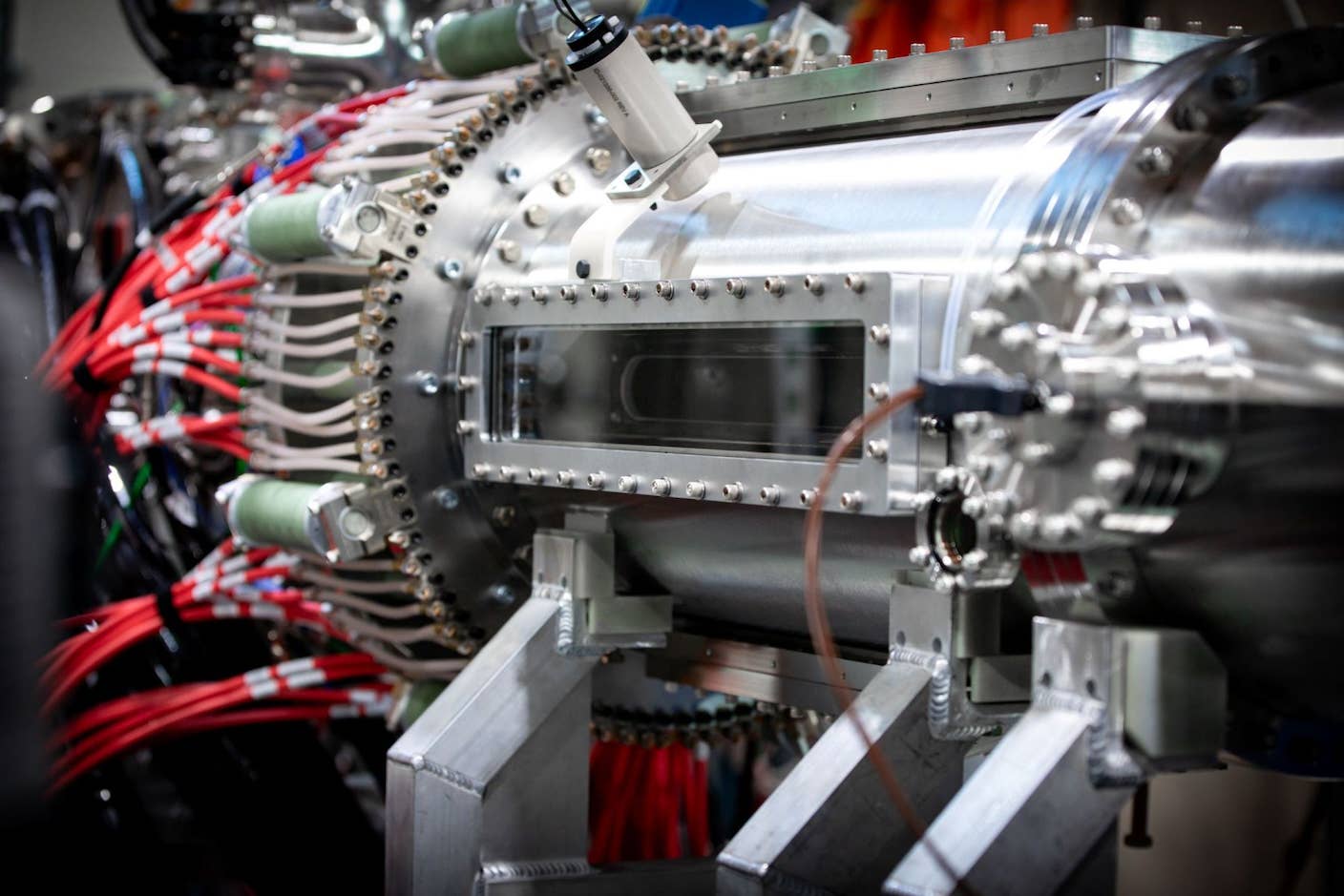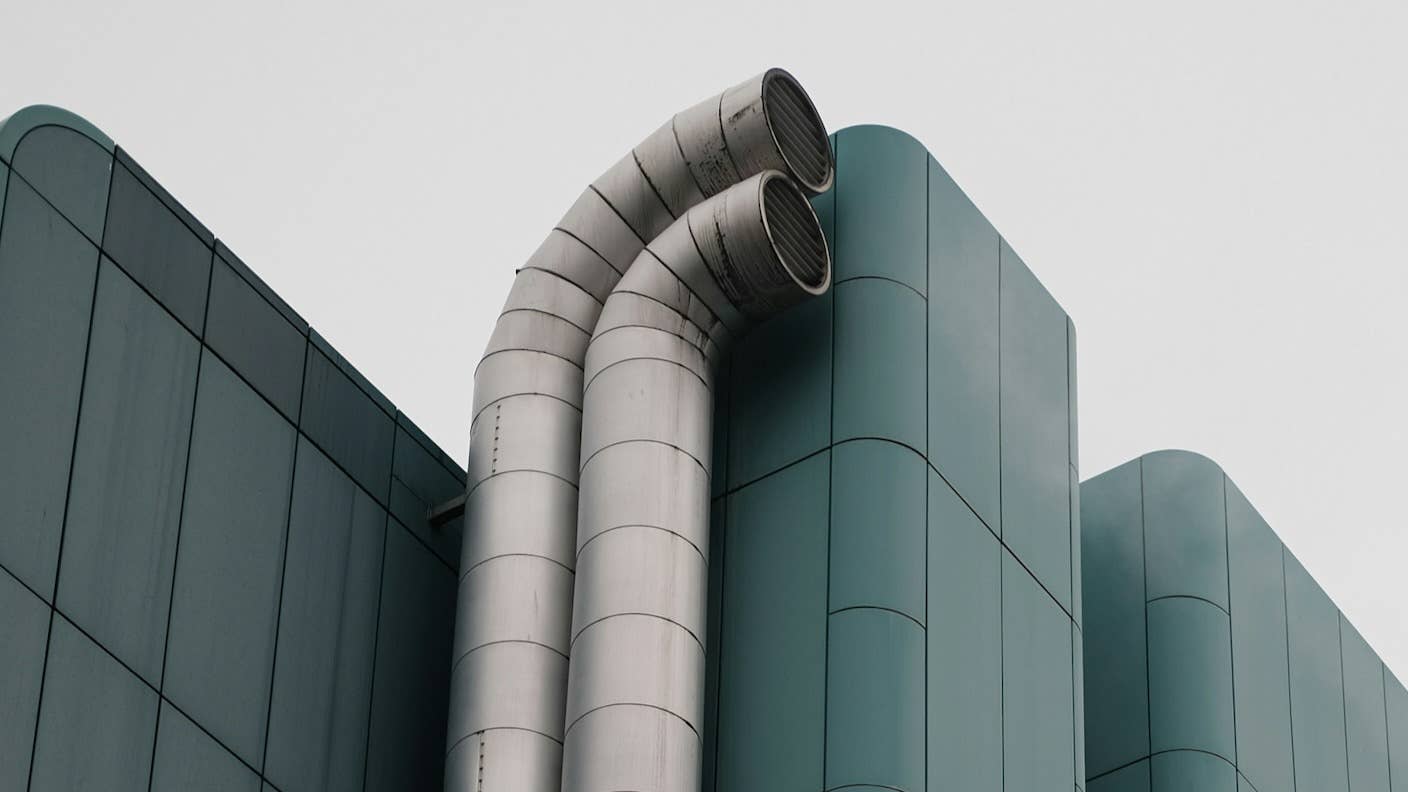Construction of the World’s Biggest Nuclear Fusion Plant Just Started in France

Share
Fusion power promises to provide limitless green energy using cheap and abundant fuel, but it’s a long-running joke that it’s always 20 years away. Last week, though, construction started on the ITER fusion plant in France, which hopes to prove the commercial viability of fusion power.
While conventional nuclear power plants generate energy by splitting atoms, nuclear fusion involves smashing two atoms together. This produces dramatically more energy than the process of fission that we’ve already mastered and doesn’t produce long-lived radioactive waste. It also doesn’t rely on radioactive elements like uranium and plutonium for fuel, instead using abundant isotopes of hydrogen called deuterium and tritium.
The only catch is that trying to contain a nuclear fusion reaction is like trying to keep the sun in a box. It’s the same reaction that powers all stars, and trying to corral that kind of raw power and turn it into something we can use effectively is a challenge scientists have been struggling with for decades.
To get the fuel to fuse, it first has to be heated to 10 times the temperature of the sun’s core, which creates a superhot plasma. To maintain the fusion reactions, this plasma needs to be strictly confined and isolated from other components. Fortunately, plasmas can be manipulated using magnetic fields, and so gigantic electromagnets are used to keep the plasma spinning around a donut-shaped reactor called a tokamak.
The problem is that all this heating and magnetic confinement requires colossal amounts of energy. While we’ve managed to get fusion reactions running on Earth they’ve always used considerably more energy than they’ve produced. The International Thermonuclear Experimental Reactor (ITER) in France is designed to change that.
The project has been a long time in the making. The idea was formulated at the tail end of the Cold War as a multinational collaboration, but design work didn’t properly start until the turn of the millennium, and its parent organization wasn’t launched until 2007. Last week French president Emmanuel Macron hosted a ceremony to celebrate the beginning of the assembly of the reactor.
Over the past five years factories, universities, and national laboratories all over the world have been working to build the components for the plant, some of which weigh several hundred tons, including a magnet powerful enough to lift an aircraft carrier. It will take another five years to piece all the parts together and get the reactor ready for its first test run.
"Constructing the machine piece by piece will be like assembling a three-dimensional puzzle on an intricate timeline," director-general of ITER Bernard Bigot said in a press release. "Every aspect of project management, systems engineering, risk management, and logistics of the machine assembly must perform together with the precision of a Swiss watch.”
Be Part of the Future
Sign up to receive top stories about groundbreaking technologies and visionary thinkers from SingularityHub.


The hope is that by 2025 the plant will be able to produce “first plasma,” a test designed to make sure the reactor works; the test will produce roughly 500 megawatts of thermal power. It will be another decade until the plant is expected to produce enough energy to be commercially viable, though. That will involve building an even larger plasma chamber to provide 10-15 times more electrical power.
While 15 years away might not seem like much of an improvement over 20, those behind the project are confident that these are the first steps towards fusion power fulfilling its promise of revolutionizing our energy systems.
It faces some competition, though. Both the UK government and a variety of startups have announced plans to pursue nuclear fusion, often aiming for much smaller and easier-to-build reactors than ITER. And despite its heavy backing from multiple nation-states, the project’s long history of cost overruns and delays means it’s certainly not a sure-fire winner.
But the project will soon be one of the world’s largest science experiments, and winner or not, there’s little doubt it will significantly push forward our understanding of fusion power. Harnessing the power of the sun on Earth may not sound like a crazy idea for much longer.
Image Credit: ITER
Related Articles

Hugging Face Says AI Models With Reasoning Use 30x More Energy on Average

Startup Zap Energy Just Set a Fusion Power Record With Its Latest Reactor

Scientists Say New Air Filter Transforms Any Building Into a Carbon-Capture Machine
What we’re reading
